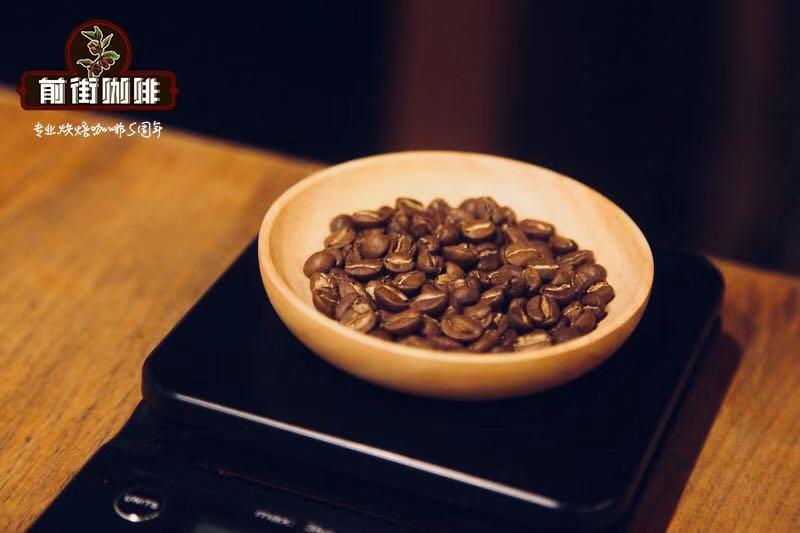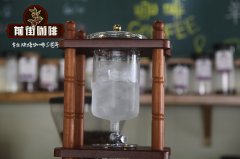What kind of beans is Huakui Coffee Coffee? introduction to the taste of Ethiopian Sidamo Fakui coffee

Professional coffee knowledge exchange more coffee bean information please follow the coffee workshop (Wechat official account cafe_style)
Qianjie Ethiopian Coffee-introduction of Sidamo Sakuran
Coffee producing countries: Africa Africa, Ethiopia Ethiopia
Coffee Manor: Guji Guji, Hambella Wamena area, Dimtu City, Buku able Manor
Production altitude: 2250-2350m
Coffee varieties: original species
Raw bean grade: G1
Treatment: Natural tanning (African drying bed)
Cup test flavor: rose, strawberry jam, peach pulp, black tea tail rhyme. Rose,Strawberry,Passion fruit
On the African continent, which is located at 38 degrees 25 minutes 3 seconds east longitude, 6 degrees 2 minutes 17 seconds north latitude and 2280 meters above sea level, there is a small mountain village surrounded by mountains, and the high mountains behind the village are covered with native coffee trees. These coffee trees, which have been screened by nature for countless generations, have different forms, but their branches and leaves are luxuriant and lush. The mountains are covered with red coffee fruits during the harvest season in December every year. This is the "Sakui" manor, the neatly arranged primitive African tanning beds at the head of the village, which is the processing plant of "Sakui".
Hambella (Humbela) is located in Guji, the largest producing area in Ethiopia, and the administration is subordinate to Oromia State. The west of Hambella is across the mountain from kochore. The two producing areas are separated by a highland with an elevation of 3200 meters and a width of about 30 kilometers, and are connected with the shakiso,Uraga and Kerchaz producing areas of Guji in the east and south, respectively. It is the highest coffee producing area at the altitude.
At present, there are about 20 processing plants of various sizes in Hambella producing areas. Dimtu, the core Hambella production area of DW, has four manor processing plants, namely Buku abel, Buku saysay, Haro soresa and Tirtiro Goye.
The annual harvest season from December to January, the first two days of the sun, to ensure the humidity of red fruit, so that its fructose fully begin to ferment reaction. At the same time, the high-altitude geographical location, so that the night temperature of the treatment plant can be reduced to about 12 degrees Celsius, and will not produce the smell of excessive fermentation because the temperature is too high. When the temperature is relatively high at noon, cover in time to prevent sunburn of red fruit. In order to prevent sudden rain at night, it will be wrapped in thick plastic sheeting.
Coffee fruits are fermented and dehydrated at relatively low temperatures. After 18 days of sun treatment, when the moisture content of raw coffee beans is reduced to about 13%, stop sun treatment and put it in sacks; put it into the warehouse under the natural conditions of 12-22 degrees Celsius and 45-55% humidity, raise raw beans and further dehydrate for about 50 days. When the moisture content of raw beans reaches about 11%, it is transported to the treatment plant for shelling and screening.
END
Important Notice :
前街咖啡 FrontStreet Coffee has moved to new addredd:
FrontStreet Coffee Address: 315,Donghua East Road,GuangZhou
Tel:020 38364473
- Prev

What are the characteristics of Sidama Coffee beans? a brief introduction to the characteristics and flavor of Sidama Sidama.
Professional coffee knowledge exchange more coffee bean information please follow the coffee workshop (Wechat official account cafe_style) the front street of Ethiopian coffee-Sidamo Sakuran introduces Sidamo coffee flavor is very diverse, because different soil composition, regional microclimate and countless native coffee varieties, resulting in obvious differences and characteristics of coffee produced in each urban area
- Next

Is the Yemeni mocha good? the history of the Yemeni mocha
Professional coffee knowledge exchange more coffee bean information please follow coffee workshop (Wechat official account cafe_style) Yemeni mocha coffee Yemen mocha coffee is described as lively, even a little wild. The pleasant wild Yemeni mocha has dried cinnamon, cardamom and dried fruits (such as raisins), with occasional flavors of tobacco, wood, roasted nuts or sweet spices. When mocha beans are deeply roasted
Related
- Beginners will see the "Coffee pull flower" guide!
- What is the difference between ice blog purified milk and ordinary milk coffee?
- Why is the Philippines the largest producer of crops in Liberia?
- For coffee extraction, should the fine powder be retained?
- How does extracted espresso fill pressed powder? How much strength does it take to press the powder?
- How to make jasmine cold extract coffee? Is the jasmine + latte good?
- Will this little toy really make the coffee taste better? How does Lily Drip affect coffee extraction?
- Will the action of slapping the filter cup also affect coffee extraction?
- What's the difference between powder-to-water ratio and powder-to-liquid ratio?
- What is the Ethiopian local species? What does it have to do with Heirloom native species?

